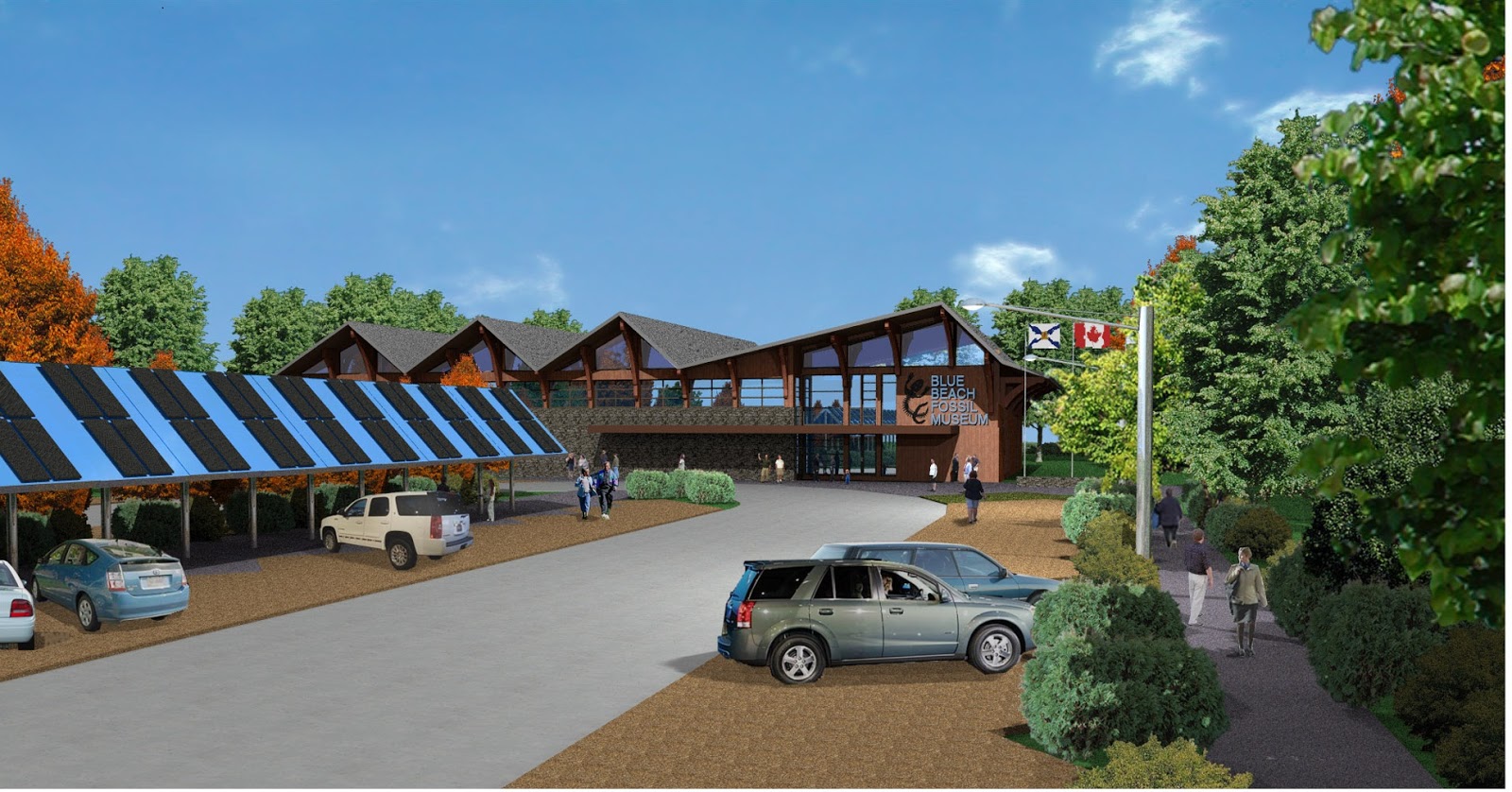Canadian Fossils Have Outgrown Their Home

Canadian Fossils Have Outgrown Their Home Let's Build a 'Paleo-Centre' A ‘One-of-a-kind’ Collection - 350 mya Lower Carboniferous Fossil Evidence ‘Evolution’s Greatest Mystery’ Rendition for the 'new' Blue Beach Fossil Museum, Nova Scotia Canada. Blue Beach, Nova Scotia Canada is internationally acknowledged by todays leading researchers as the oldest fossil site in the world showing evidence of the first 4-legged, terrestrial air-breathing creatures to move from water on to land: the tetrapods. The first discovery of the 350 million year old fossil vertebrate footprint evidence at Horton Bluff (Blue Beach) was by Sir William Logan in 1841. Much later, in the 1940’s and 1950’s a researcher from Harvard (Dr. Alfred Romer) looked for evidence of these primitive land-animals and instead found a ‘gap’ that spanned the first 30-million years of the Carboniferous Period (360 million years ago, a time